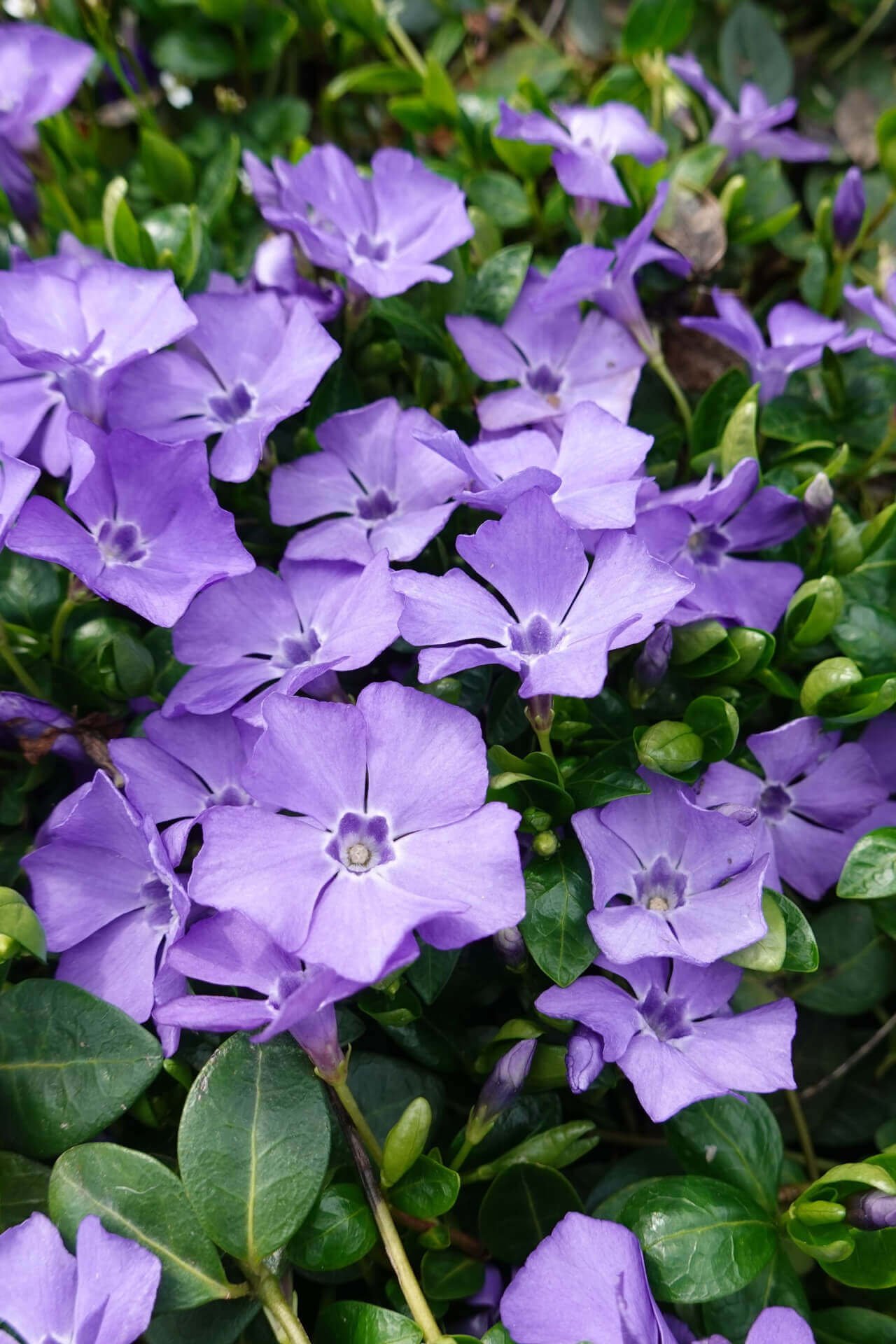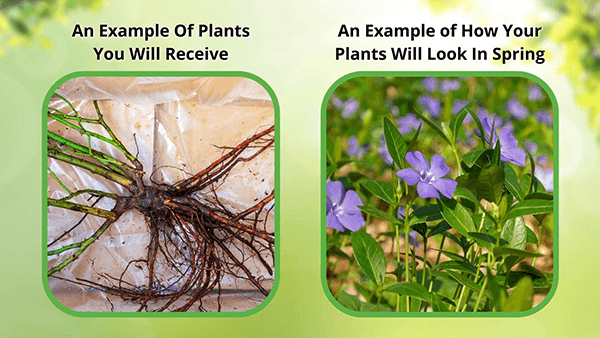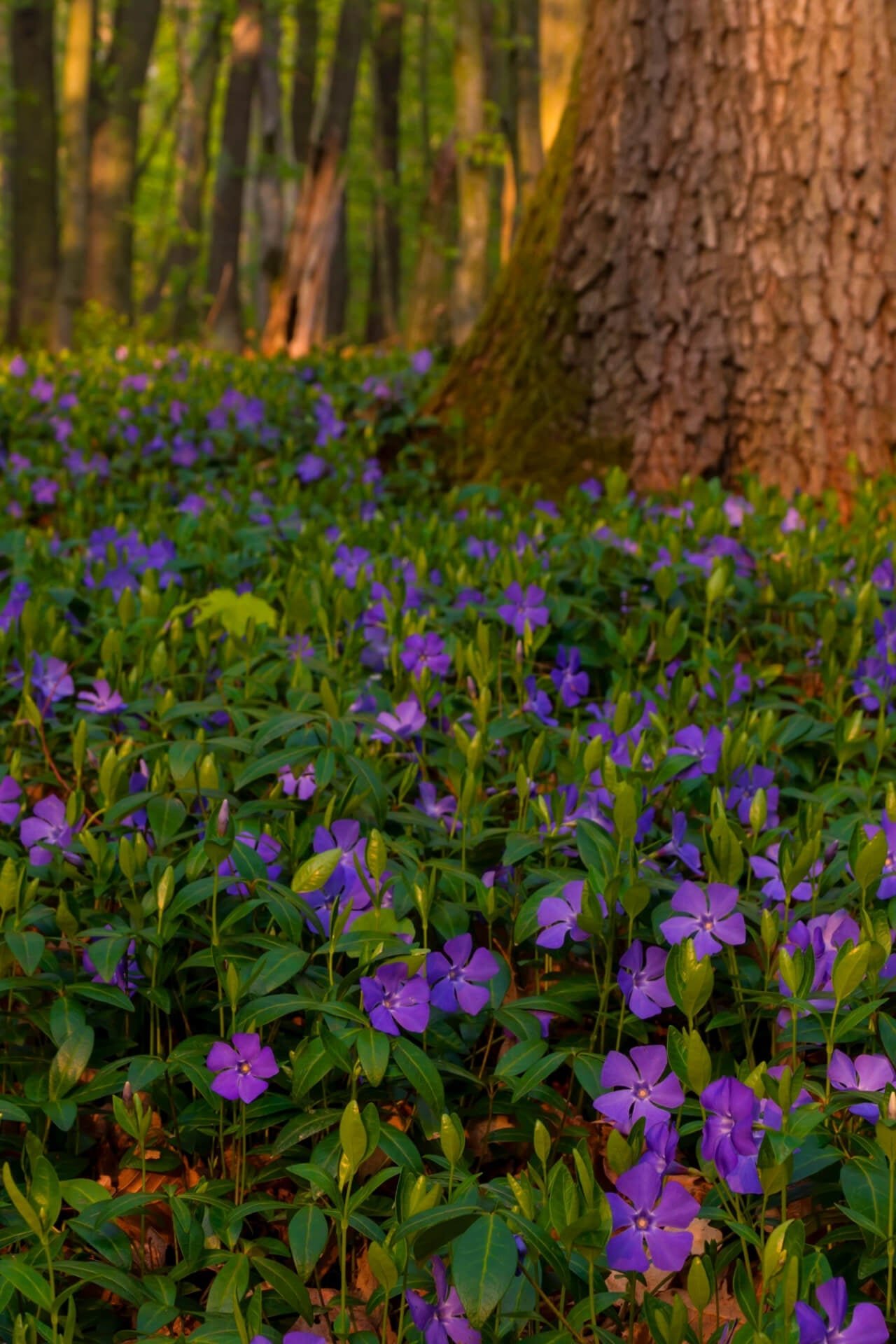



Periwinkle Plant
Shipping Information:
NowWe sell bare root plants - click here to see what you'll receive
Periwinkle Plant - Vinca
The periwinkle plant is a perennial vine and a low-growing, evergreen ground cover with glossy green leaves and small, violet-blue flowers. It is often used to fill in garden spaces and control erosion. Incorporating it into landscaping offers many benefits that add beauty and functionality to outdoor spaces. This versatile ground cover brings lushness, adaptability, erosion control, low-maintenance care, and soft elegance to garden settings.
Vinca minor is famous for its blue flowers, and this flower is an excellent groundcover. Unlike some groundcovers, it proliferates without becoming invasive. Because of this, many home gardeners and landscape designers like to add this cheery flower to their landscape.
Periwinkle Plant Has Many Names
It initially originated in central and southern Europe. Classified as a part of the dogbane family, this flower quickly spread to the Baltic States, the Netherlands, and the Caucasus. Today, it is grown around the world as a groundcover. Sometimes, people may refer to this groundcover by other common names, like creeping myrtle or myrtle.
Periwinkle Plant Helps With Soil Erosion
Periwinkle Plant is truly a gardener’s delight. Its strong roots help to control soil erosion, and its trailing vines are full of glossy leaves. Because deer don’t usually like it, you don’t have to worry about it disappearing. Plus, it can handle some foot traffic, so it doesn’t get trampled easily.
Because it is considered an evergreen, it will keep its glossy, green leaves in the winter. After you set it out it, the vines will gradually spread over neighboring areas. While it mainly grows along the ground, this vine can sometimes get up to 16 inches tall. Unlike other vines, it never climbs or twines around trees or walls. Instead, you can enjoy having it as a permanent ground cover in your garden.
The Periwinkle Plant Flowers Are Sure to Impress
The most notable part of this vine is its flowers. They are typically created between early spring and the middle of summer. Sometimes, you will still notice a few flowers in autumn. All of the flowers have a violet-purple shade and a five-lobed corolla. On some species, you can even find white and pale purple flowers.
It is a drought tolerant ground cover
With it, you will have an evergreen mat in your garden beds throughout the year. The flowers remain for many of spring and summer so that you can appreciate bright blue pops. Thanks to its rapid growth, you don’t have to wait long to see this lovely vine fill empty areas in your yard.
Why is it so garden-friendly
They are prized for their beautiful flowers that are available year round and are pink, purple, white or blue. Not only are they maintenance free but they can tolerate most soils and climates.
Can it grow in shaded areas?
Yes, it does well in shaded and partially shaded conditions. That is why they are well suited for filling in under trees or any other location where other flowers can barely grow.
How do I care for mine?
They require a little care. Water them occasionally, and the soil should be drained well. They are very hardy and, as such, ideal for growers with little experience and experienced ones.
Are they good for ground cover?
It grows and spreads rapidly to form a dense green blanket on the ground, which makes it excellent for controlling soil erosion and smothering weeds in gardens.
Does it bloom all year round?
In warm climates, they can flower almost all year round, offering constant beauty. They are a rewarding and reliable option for your landscape.
| Planting zone | [4, 5, 6, 7, 8, 9] |
|---|---|
| Bloom season | Summer |
| Bloom color | Purple |
| Height At Maturity | Under 12" |






Periwinkle Plant
Shipping Information:
Now| Planting zone | [4, 5, 6, 7, 8, 9] |
|---|---|
| Bloom season | Summer |
| Bloom color | Purple |
| Height At Maturity | Under 12" |

